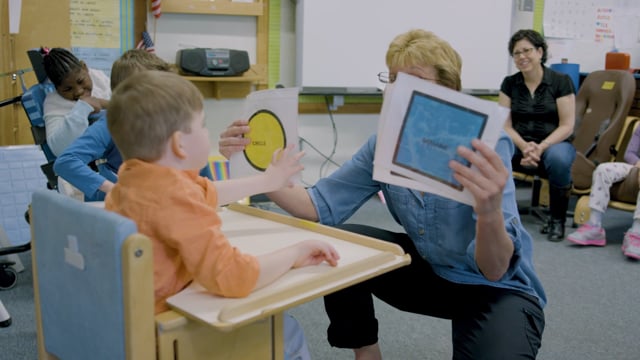Caring for Your Child With Cerebral Palsy (CP): Birth to Age 5
When your child is diagnosed with cerebral palsy (CP), there's a lot to take on. You have to figure out health care, childcare, and the best path forward for your child. It's normal to feel overwhelmed. But many resources and support services are available to help you.

Caring for Your Child with CP
Here’s what to expect as your child grows – and how to plan for it – so that you can give your child the best start.
This 8-step checklist can help you decide which early steps to take.
Step 1: Contact Early Intervention
Kids who have disabilities or delays get extra support to reach developmental milestones (like walking, talking, and self-feeding) through a program called early intervention.
Early intervention offers free therapy services for babies and children up to age 3. Therapy can happen at home or in a daycare setting. Kids can receive:
- physical therapy to improve gross motor skills (like sitting and walking)
- occupational therapy to help with fine motor skills (like picking up small objects)
- speech therapy to improve speech and communication
Each state runs its own early intervention program. Ask your pediatrician for a referral or visit the Early Childhood Technical Assistance Center directory for state-specific contact info.
After your child turns 3, services can continue at home or in preschool. Contact your school district to arrange this when your child is 2½.
Step 2: Consider Help With Caregiving
Some kids with CP have trouble eating and swallowing, have seizures, or need medicines at set times. Consider having someone come to your home to help with caregiving. Options include:
- A visiting nurse or home health aide. These professionals can help with bathing, dressing, giving medicines, and mealtimes. You can ask your child's doctor for a prescription and referral for in-home help. Care is usually arranged through your hospital's care management team, a group of nurses, and social workers. Contact your insurance company to find out if you have coverage for this care.
- Respite caregivers. This care can help give you a break. Respite care may be for a few hours a day, or longer, in your home. It’s also available through day programs at a care facility, and may include overnight care when needed. Check the RCH National Respite Network database of respite services. Funding is available in most states to pay for respite care, but funds are limited and waiting lists are common.
- Friends and family. They often want to help, but they don’t know how. Make a list of things they can do — from carpooling to running errands — and let them choose. An online sign-up tool can keep things organized.
Step 3: Look Into Medicaid
Even if you have private health insurance, your child might qualify for Medicaid, the federal health insurance program that provides coverage for people with disabilities. Medicaid can cover treatments that are not covered by your private carrier and can help lower out-of-pocket medical costs.
Step 4: Find Childcare, if Needed
If you’re looking for a childcare provider, be sure that the one you choose has the skills and setting needed to safely handle your child's needs. By law, childcare providers cannot discriminate against children with disabilities or special health care needs.
In many cases, the state agencies that handle early intervention can provide referrals to appropriate childcare providers.
Step 5: Secure Your Child's Future
Talk with a lawyer about making legal and financial plans that will protect your child in the future. One who practices special needs law can advise you on the best plan for your family.
Also talk about creating a will that, aside from financial matters, says who would care for your child in the event of your death.
Step 6: Schedule Play Dates and Parent Dates
All children benefit from friendships and play. Here’s some ideas:
- Set up play dates with other kids (both with and without CP).
- Tell others about how CP affects your child; mention interests they share.
- Enroll your child in a community program, such as art, music, and sports.
- Also consider joining a support group or social group for parents of children with disabilities. These friends can relate to what you’re going through and offer practical advice. Ask a member of your care team where to meet other families near you.
Step 7: Prepare for School
By age 3, your child may be eligible for educational services through your local school district. Learn more about navigating the grade-school years.
Step 8: Find "Me" Time
Life with young children can be overwhelming, and even more so when kids have disabilities or special health care needs. So remember to take time for yourself to relax and recharge: take a walk, read a book, exercise, or do a favorite hobby.
Accept help from friends and family members. After a break, you’ll be better able to enjoy time spent with your family.
What Else Should I Know?
As your child grows, stay up to date with all medical visits. This ensures that your child gets the right nutrition, vaccinations, and prescriptions.
Care will change as your child gets older. By knowing what to expect, you’ll feel more confident caring for your child.
Reviewed by: Larissa Hirsch, MD
Date Reviewed: Mar 1, 2024
















